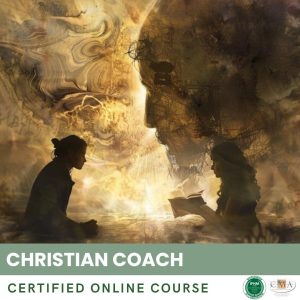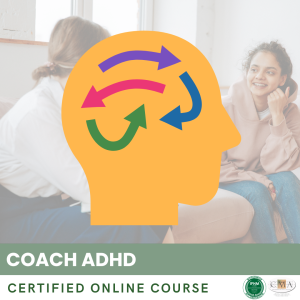Resilience and protective factors are essential concepts for understanding how LGBTQ+ individuals manage to overcome adversity related to their identity and to thrive despite often hostile environments. While minority stress exposes to increased risks for mental health, all LGBTQ+ individuals do not face it in the same way. Some show a great ability to “bounce back” from challenges, to tap into their resources to build and assert themselves. This resilience is not a matter of innate quality or personality trait, but rather a dynamic and multifactorial process, which develops throughout life in interaction with the environment.
Among the main protective factors identified by research, social support and acceptance by those around play a crucial role. Being able to rely on parents, friends, teachers who validate and support one’s LGBTQ+ identity allows one to feel legitimate, to develop a positive self-image and to face adversity. Conversely, family rejection, particularly during adolescence, is a major risk factor for mental health and risk behaviours. Beyond the immediate circle, feeling integrated into a community, meeting peers with whom to share experiences and project oneself is a valuable resource. LGBTQ+ associations, support groups, safe spaces offer this sense of belonging and validation by peers, essential to counterbalance minority stress.
Access to positive models and valorising representations of LGBTQ+ identities is another important resilience factor. Growing up with access to books, films, public figures that reflect the diversity of sexual orientations and gender identities allows one to construct oneself affirmatively, to develop positive aspirations for oneself. This contributes to deconstruct negative stereotypes and to nourish the hope of a fulfilled life. Representations have a direct impact on the imagination of the possible and identity construction.
Personal resources and psychosocial skills are also pillars of resilience. Among these, self-esteem, the ability to express emotions, self-assertion in relationships, problem-solving or stress management are all assets to face the challenges of the LGBTQ+ journey. These skills are not innate but develop through experience, often as a result of the trials and tribulations. They can also be worked on in the context of support, through the use of appropriate personal development tools.
Commitment to a journey of meaning and self-fulfilment is another important protective factor. Being able to connect to deeper values, to give meaning to one’s identity and journey allows one to transcend trials and maintain a course. This can involve militant commitment to LGBTQ+ rights, involvement in creative and artistic projects, a spiritual or philosophical quest… Any approach that allows one to feel aligned with oneself, useful and connected to something larger is a resource in the face of adversity.
Examples of resilience journeys:
– Lea, a young 20-year-old lesbian, grew up in a very religious family that rejects homosexuality. Despite the homophobic atmosphere, she was able to rely on the unwavering support of her grandmother, who always encouraged her to be herself. This privileged relationship allowed her to preserve self-esteem and project herself into a happy life. Today, Lea is an activist in an inclusive Christian association and shares her journey to help other young LGBTQ+ believers.
– Tom, a 35-year-old trans man, came out as trans late, after a long period of questioning. He was able to rely on the support of his partner and a few close friends, but had to face the rejection of part of his family and workplace transphobia. To overcome these trials, Tom invests in a trans discussion group, where he can share his experiences and find resources. He also discovered a passion for writing, which allows him to express his emotions and give meaning to his story. Today, he runs a blog on trans masculinities and is considering writing an autobiographical novel.
– Samir, a 45-year-old gay man, had a difficult adolescence marked by school bullying and family rejection. He went through periods of depression and addiction before finding resources in art and meditation. Theatre practice allowed him to work on self-assertion and transform his wounds into creative strength. Meditation has helped him to calm his mind and reconnect with his body. Today, Samir holds mindfulness and theatre workshops for troubled LGBTQ+ youths, in order to pass on the tools that have helped him.
As a coach, it is essential to have an approach centred on the resources and skills of the individuals, rather than on their vulnerabilities. The aim is to help the person identify their strengths, their past successes, their dreams and aspirations, to nourish a positive vision of themselves. Exploring times when they exhibited resilience, when they bounced back from adversity, can help reveal and strengthen their abilities.
The coach can also encourage individuals to get involved in nourishing activities and relationships, which contribute to their well-being and fulfilment. Whether it’s through community involvement, artistic or sports practice, friendships or romantic relationships… Any experience that makes one feel alive, competent, and connected is a precious resource.
Work on emotional and stress management is often necessary to strengthen resilience. Learning to welcome emotions, even unpleasant ones, expressing them appropriately and mobilising relaxation techniques can better handle difficult situations. The coach can provide tools of mindfulness, breathing, positive visualisation to help the person calm and centre themselves.
Finally, the coach should be a kind and consistent ally, who deeply believes in the individual’s potential for resilience. Maintaining a positive and valuing gaze, celebrating successes and progress, showing availability and listening in times of doubt… are all postures that promote a feeling of security and trust, necessary to dare to move forward. The coaching relationship itself is a protective factor, which can nourish resilience through the positive experience of being unconditionally supportive and encouraging.
Key points to remember:
– LGBTQ+ people’s resilience is a dynamic and multifactorial process that develops in interaction with the environment, not an innate quality.
– The main protective factors are: social support and acceptance by those around, integration into a community, access to positive models, personal resources and psychosocial skills, as well as commitment to a journey of meaning and self-fulfilment.
– Family rejection, particularly during adolescence, is a major risk factor for the mental health and risk behaviours of LGBTQ+ individuals.
– Associations, support groups and safe spaces offer a sense of belonging and validation by peers, essential to counterbalance the stress of being a minority.
– Positive and valorising representations of LGBTQ+ identities have a direct impact on the imagination of the possible and identity construction.
– As a coach, it is essential to have an approach centred on the resources and skills of individuals, by helping them identify their strengths, past successes and aspirations.
– Encouraging individuals to engage in nourishing activities and relationships contributes to strengthening their well-being and fulfilment.
– Work on emotional and stress management, with tools of mindfulness, breathing and positive visualisation, allows to better face difficult situations.
– The coach must be a kind and consistent ally, who deeply believes in the individual’s resilience potential. The coaching relationship itself is a protective factor.
👉 To download docx (Editable) file click here : Click here
👉 To download PDF file click here : Click here
👉 To download MP3 file click here : Click here







